
Char Dham Yatra places: Exploring the Sacred Shrines of Uttarakhand
The Char Dham Yatra is an iconic pilgrimage in India, revered by millions for its spiritual significance and breathtaking natural beauty. The journey encompasses four sacred shrines—Yamunotri, Gangotri, Kedarnath, and Badrinath—each nestled in the majestic Himalayas of Uttarakhand. This pilgrimage not only offers a chance for spiritual rejuvenation but also allows travelers to connect deeply with nature. In this guide, we will delve into the significance of each shrine, the travel experience, practical tips, and other related insights.
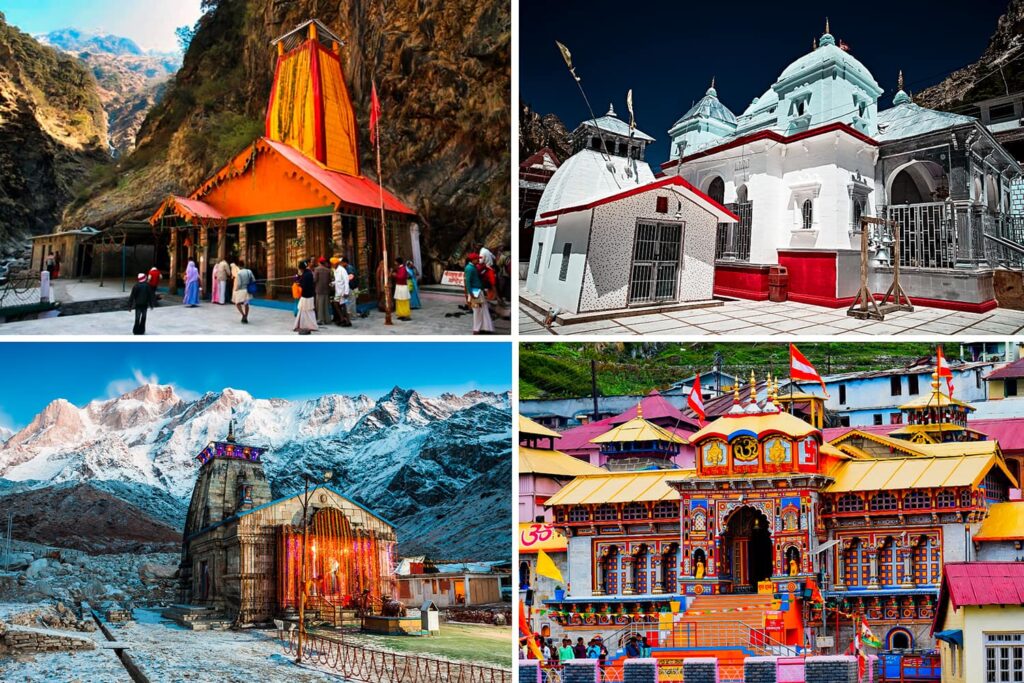
The Importance of the Char Dham Yatra
The Char Dham Yatra is considered a pathway to moksha (liberation from the cycle of birth and death) and spiritual enlightenment. It embodies the essence of devotion, reverence, and the eternal quest for truth and fulfillment. The pilgrimage attracts thousands each year, from ardent followers of Hinduism to adventure seekers drawn to the scenic trekking routes.
Spiritual Significance
- Path to Moksha: Pilgrims believe that visiting the four shrines can help in attaining moksha, as each location represents a distinct spiritual journey.
- Cultural Heritage: The Char Dham Yatra is not just about the religious aspect; it is also a celebration of Indian culture and traditions, encapsulating centuries of rituals, customs, and folklore.
- Natural Beauty: The pilgrimage routes offer breathtaking views of the Himalayas, serene landscapes, and a chance to experience diverse flora and fauna.
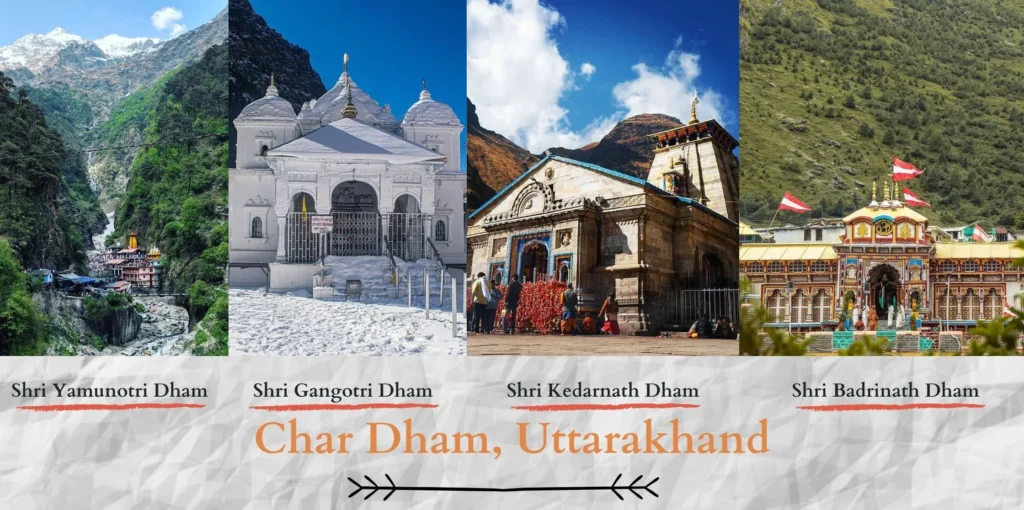
1. Yamunotri: A Journey to the Source of the Yamuna
Overview of Yamunotri
Yamunotri is the first stop in the Char Dham Yatra, located at an altitude of about 3,235 meters. It is the origin of the Yamuna River, which holds immense religious importance in Hinduism. The temple dedicated to Goddess Yamuna is situated here, and the region is surrounded by magnificent peaks, offering an awe-inspiring view.
Spiritual Significance
Yamunotri is believed to be the abode of Goddess Yamuna, who is often depicted as a nurturing and protective figure. According to mythology, a dip in the holy waters of the Yamuna is said to wash away sins and grant liberation. The temple here is an architectural marvel, featuring a striking black marble idol of the goddess.
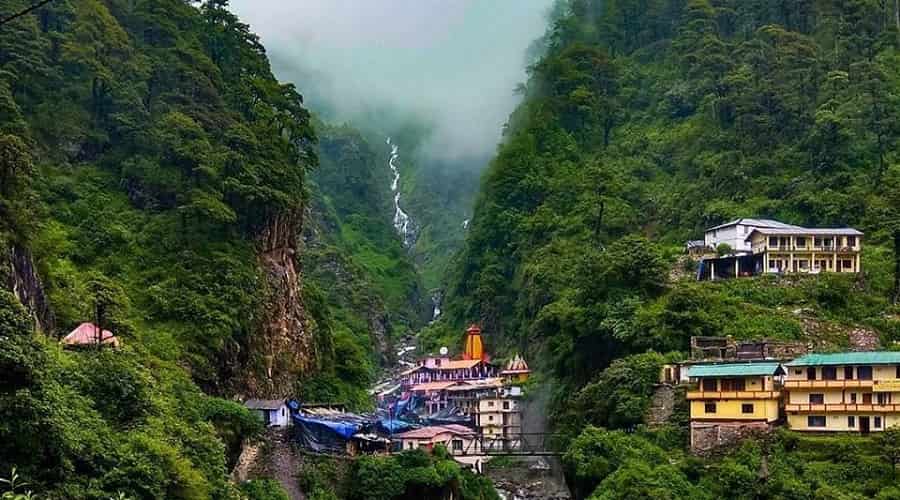
Mythological Significance
According to Hindu mythology, the Yamuna is personified as a goddess, the daughter of the Sun God (Surya) and sister of Yama, the God of Death. Pilgrims flock to Yamunotri to seek the blessings of the goddess, believing that a dip in her sacred waters can cleanse them of sins and provide protection.
The Trek to Yamunotri
The trek to Yamunotri begins from Hanuman Chatti or Janki Chatti, both of which are accessible by road. The approximately 5-kilometer trek takes you through beautiful forests of oak and pine, with the sound of gushing streams accompanying you. The serene environment makes this trek not just a physical journey, but a meditative experience.
Important Tips for Yamunotri
- Best Time to Visit: The best time to visit Yamunotri is from April to November, avoiding the winter months when heavy snowfall occurs.
- Accommodation: Basic guesthouses and dharamshalas are available in Janki Chatti and Hanuman Chatti, but it is advisable to book in advance during the peak season.

Keywords And Meaning
- Liberation: The release from the cycle of birth and death, often sought through pilgrimage.
- Dharamshala: A rest house or accommodation for pilgrims, usually simple and affordable.
2. Gangotri: The Sacred Waters of the Ganges
Overview of Gangotri
The second destination in the Char Dham Yatra is Gangotri, located at an altitude of 3,042 meters. It is considered the source of the Ganges River, one of the holiest rivers in Hinduism. The Gangotri Temple, dedicated to Goddess Ganga, attracts countless pilgrims seeking spiritual purification.
Spiritual Significance
According to Hindu beliefs, the Ganges descended to Earth to help King Bhagirath liberate the souls of his ancestors. The sight of the Ganges flowing from the glacier is awe-inspiring, and many devotees come here to bathe in its holy waters, which are believed to wash away sins.
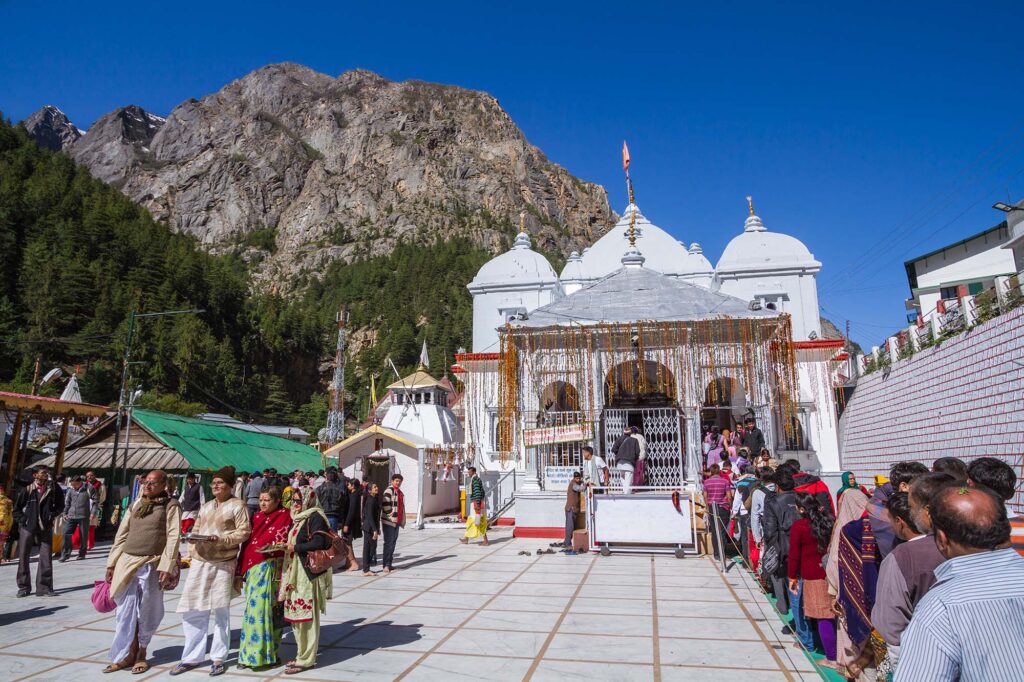
Mythological Significance
Gangotri holds profound significance in Hindu mythology. According to legend, the Ganges descended to Earth from the locks of Lord Shiva to purify the soul of King Bhagirath’s ancestors. The temple serves as a tribute to this divine act, making it a place of great reverence for devotees.
The Journey to Gangotri
Gangotri can be reached from Uttarkashi, either by road or through a trek. The route to Gangotri is dotted with stunning landscapes, including lush valleys, gushing rivers, and snow-capped mountains. The breathtaking views along the way make this journey a memorable experience.
Important Tips for Gangotri
- Accessibility: Ensure your vehicle is equipped for hilly terrains, as the roads can be challenging.
- Local Cuisine: Don’t miss trying local delicacies like aloo ke gutke (spicy potatoes) and kheer (rice pudding).

Keywords and Meanings
- Spiritual Purification: The process of cleansing oneself from sins and impurities through rituals and pilgrimages.
- Local Delicacies: Traditional foods specific to a region, often reflecting the culture and heritage of the area.
3. Kedarnath: The Lord of the Mountains
Overview of Kedarnath
Kedarnath is situated at an elevation of 3,583 meters and is dedicated to Lord Shiva. The Kedarnath Temple, which is over a thousand years old, is one of the twelve Jyotirlingas in India, making it a significant pilgrimage site for devotees of Shiva.
Spiritual Significance
Kedarnath holds a special place in Hindu mythology. It is believed that the Pandavas sought Lord Shiva’s blessings to absolve themselves of their sins after the Kurukshetra War. The temple is surrounded by breathtaking views of the Kedarnath mountain range, enhancing its spiritual ambiance.

Mythological Significance
Kedarnath is associated with the epic tale of the Pandavas from the Mahabharata. After the Kurukshetra War, the Pandavas sought Lord Shiva’s blessings to absolve their sins. Lord Shiva, in the form of a bull, eluded them and finally settled in Kedarnath. Pilgrims believe that visiting Kedarnath can help them seek forgiveness and divine blessings.
The Trek to Kedarnath
To reach Kedarnath, pilgrims typically start their journey from Gaurikund, which is about 16 kilometers away. The trek is demanding but rewarding, offering spectacular views of snow-capped peaks and lush green valleys. The presence of shops along the route provides opportunities for rest and refreshments.
Important Tips for Kedarnath
- Weather Conditions: Be prepared for sudden changes in weather; layering your clothing is advisable.
- Health Precautions: Acclimatize properly to the altitude to avoid altitude sickness.

Keywords and Meanings
- Altitude Sickness: A condition caused by reduced oxygen levels at high altitudes, leading to symptoms like headache and nausea.
- Jyotirlingas: Sacred shrines dedicated to Lord Shiva, representing his divine light.
4. Badrinath: The Divine Abode of Vishnu
Overview of Badrinath
Badrinath is the final destination of the Char Dham Yatra, situated at an altitude of 3,133 meters. It is dedicated to Lord Vishnu, who is worshipped here as Badrinath. The temple is surrounded by the breathtaking Neelkanth Peak and the Nar-Narayan mountain ranges.
Spiritual Significance
The temple’s history dates back to the 9th century when Adi Shankaracharya established it as a major pilgrimage site. Badrinath is believed to be the place where Lord Vishnu meditated, and it was once covered in wild berries, hence the name Badrinath, meaning “Lord of Berries.”

Mythological Significance
The Badrinath Temple has a rich history dating back to the 9th century when Adi Shankaracharya established it as a major pilgrimage site. The temple is believed to be the place where Lord Vishnu meditated and was once covered in wild berries.
The Journey to Badrinath
Badrinath is well connected by road, making it accessible for pilgrims. The journey is filled with beautiful landscapes, including rivers, forests, and mountains. For those looking for an adventurous experience, trekking routes are available that provide a more intimate connection with nature.
Community and Culture
The Yatra fosters a sense of community among pilgrims. Individuals from diverse backgrounds come together, sharing stories, beliefs, and experiences. This communal spirit enriches the overall pilgrimage experience.
Health and Wellbeing
Visiting the Char Dham also encourages physical fitness, as trekking and hiking are integral parts of the journey. Many travelers report improved physical health and mental well-being post-pilgrimage.
Important Tips for Badrinath
- Accommodation: Numerous hotels and guesthouses are available, ranging from budget to luxury. Advance booking is recommended, especially during peak seasons.
- Local Festivals: Visit during festivals like Makar Sankranti or Badri Kedar Utsav to experience the local culture and festivities.

Keywords and Meanings
- Adi Shankaracharya: A prominent Indian philosopher known for consolidating the doctrine of Advaita Vedanta.
- Badri Kedar Utsav: A festival celebrating the deities of Badrinath and Kedarnath, featuring cultural performances and rituals.
Significance of the Char Dham Yatra
The Char Dham Yatra holds immense spiritual significance for Hindus. It is believed that undertaking this pilgrimage washes away sins and ensures salvation. The journey is not just a physical trek but a spiritual quest, offering a chance to connect with the divine and experience the serene beauty of the Himalayas. The yatra typically begins in late April or early May and continues until October or November, depending on weather conditions1.
Travel Tips for the Char Dham Yatra
Planning Your Trip
- Best Time to Visit: The Char Dham Yatra is best undertaken between April and November. The weather during this period is relatively pleasant, making it ideal for trekking and pilgrimage. Monsoon (July-August) should be avoided due to the risk of landslides.
- Physical Preparation: The Yatra involves considerable trekking, so ensure you are in good physical condition. Engage in regular exercise and prepare your body for high-altitude conditions.
- Accommodation Options: Accommodation options vary from basic dharamshalas to more comfortable hotels. It is advisable to book in advance, especially during peak pilgrimage season, to avoid last-minute hassles.
- Packing Essentials: Carry essential items like warm clothing, trekking shoes, a good backpack, a water bottle, and personal hygiene products. Don’t forget to pack a first-aid kit for emergencies.

Safety Measures
- Weather Preparedness: Always check weather forecasts before your journey. Conditions in the mountains can change rapidly, so be prepared for rain or snow.
- Emergency Contacts: Keep a list of emergency contacts, including local authorities, hospital numbers, and family contacts.
- Travel Insurance: Consider obtaining travel insurance that covers medical emergencies and trip cancellations, especially when trekking in remote areas.
- Respect Local Customs: Familiarize yourself with local customs and traditions. Respect the sanctity of religious sites and adhere to guidelines provided by authorities.
Environmental Responsibility
- Leave No Trace: Always carry back your trash and dispose of it properly. Respect the local environment and minimize your impact on the natural surroundings.
- Support Local Communities: Engage with local businesses and artisans to promote sustainable tourism. This supports the local economy and preserves cultural heritage.
- Wildlife Conservation: Be cautious of the local wildlife and maintain a safe distance. Avoid feeding animals or disturbing their habitats.
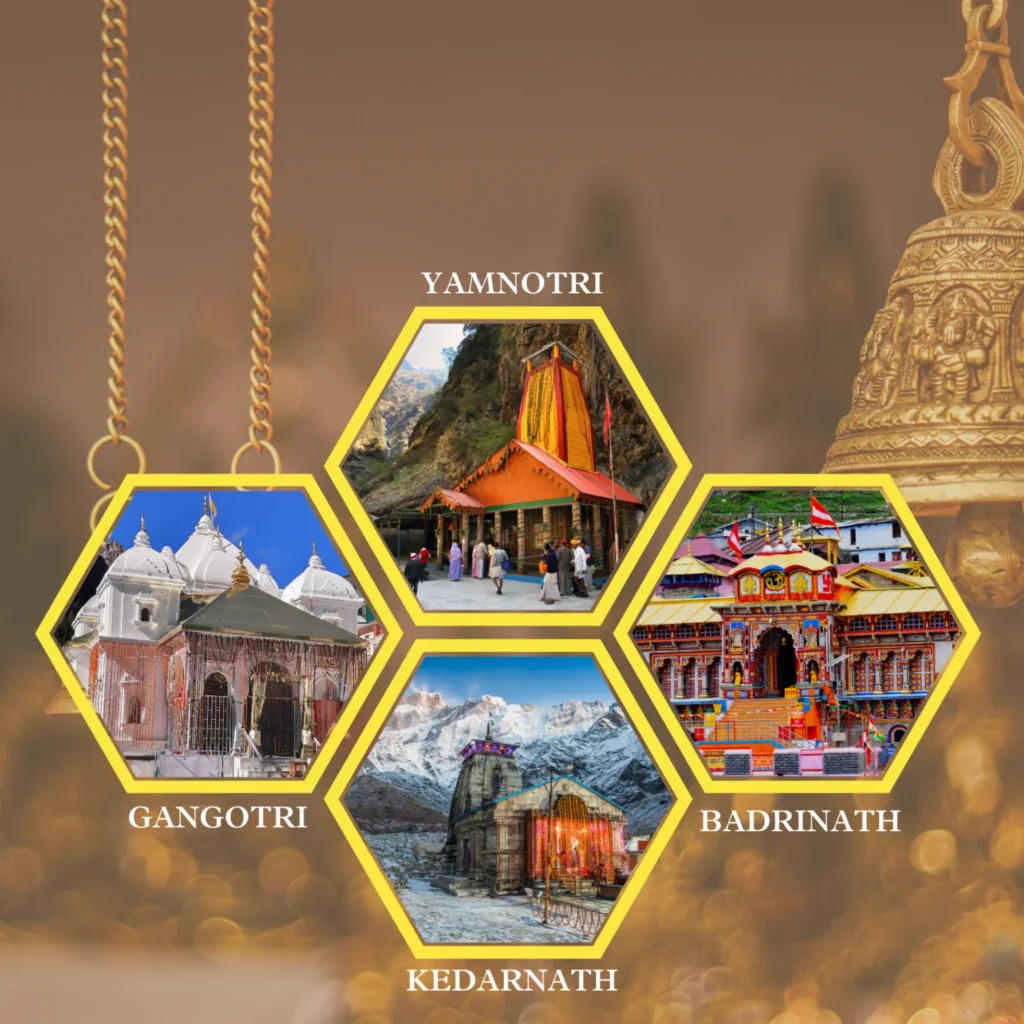
The Char Dham Yatra Experience
Spiritual Fulfillment
The Char Dham Yatra is a deeply spiritual journey that provides an opportunity for self-reflection and introspection. Many pilgrims describe a sense of peace and fulfillment after visiting these sacred sites. The experience is transformative, often leading to a deeper understanding of one’s beliefs and purpose.
Connecting with Nature
The journey through the Himalayas offers breathtaking views and a chance to connect with nature. The serene landscapes, flowing rivers, and majestic mountains create an atmosphere of tranquility that enhances the spiritual experience.
Community and Camaraderie
Pilgrims from various backgrounds come together during the Char Dham Yatra, fostering a sense of community and camaraderie. Sharing stories and experiences with fellow travelers enriches the journey and creates lasting bonds.
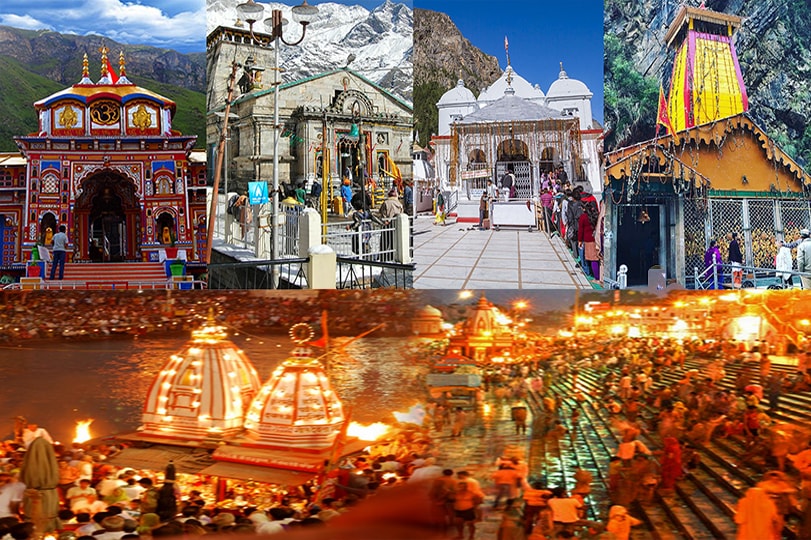
Planning Your Char Dham Yatra
Best Time to Visit
The ideal time for the Char Dham Yatra is from April to November. The weather is pleasant during these months, making it suitable for trekking and exploring the shrines. Monsoon season should be avoided due to the risk of landslides and heavy rains.
Preparing for the Journey
- Physical Fitness: Engaging in regular exercise and preparing for the trek is essential. Strength training, cardiovascular workouts, and practice hikes can help build endurance.
- Packing Essentials: Carry lightweight and weather-appropriate clothing, sturdy trekking shoes, a first-aid kit, and necessary medications. Don’t forget to pack sufficient water and snacks for the journey.
- Travel Arrangements: Consider booking through a reputable travel agency that specializes in Char Dham tours. They can assist with transportation, accommodation, and local guides.

Pilgrimage and Personal Growth
Undertaking the Char Dham Yatra is often seen as a transformative experience. Many pilgrims recount stories of personal growth, spiritual awakening, and newfound clarity about their life’s purpose. The challenges faced during the trek, whether physical exhaustion or the unpredictability of the weather, encourage perseverance and resilience.
Pilgrims often find that these challenges become metaphors for overcoming obstacles in life. The journey becomes not just a path to divine sites but also a journey within, leading to profound self-discovery.
Engaging with Local Communities
A vital aspect of the Char Dham Yatra is the interaction with local communities. The people of Uttarakhand, known for their warmth and hospitality, offer pilgrims a glimpse into the rich cultural tapestry of the region. Engaging with locals allows travelers to learn about traditional customs, practices, and the historical significance of the shrines.
Many villagers also participate in the pilgrimage, either as guides or through their roles as priests in the temples. This community involvement strengthens the bond between visitors and locals, fostering mutual respect and understanding.
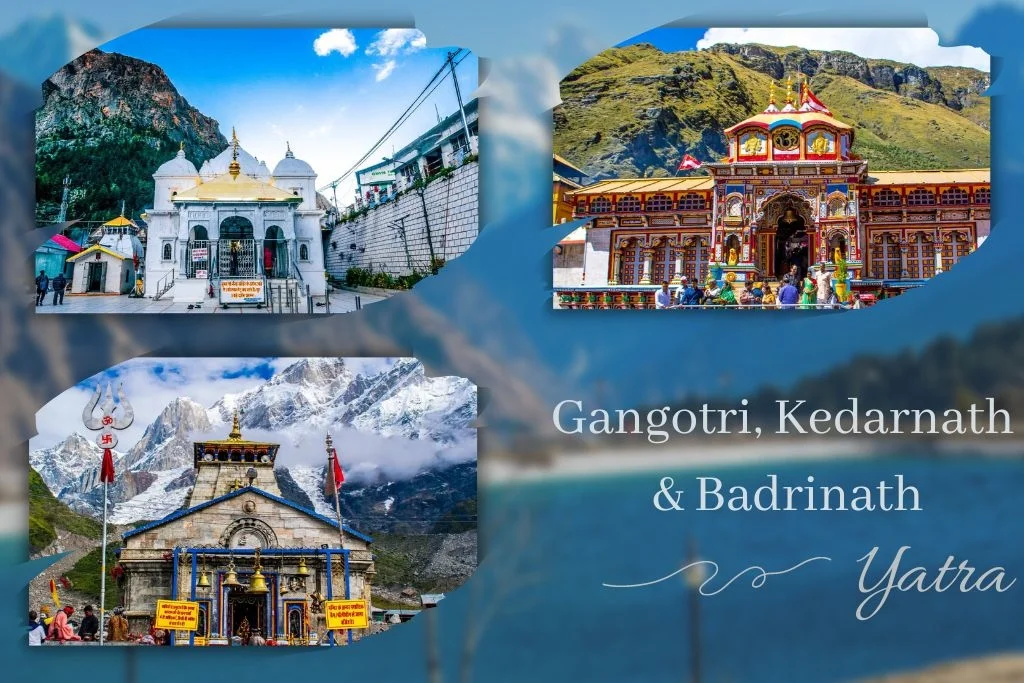
Sustainable Practices on the Pilgrimage
In recent years, there has been a growing emphasis on sustainable tourism practices in the Char Dham region. With the increase in footfall, it is crucial to ensure that the natural beauty and sanctity of these sacred sites are preserved. Initiatives have been launched to promote eco-friendly practices among pilgrims, including:
- Waste Management: Implementing systems for proper waste disposal to minimize environmental impact.
- Responsible Trekking: Encouraging travelers to stick to marked trails and avoid littering to preserve the natural habitat.
- Local Engagement: Promoting local handicrafts and products helps sustain the economy while ensuring the preservation of cultural heritage.

Spiritual Rituals and Practices
The Char Dham Yatra is rich with rituals and spiritual practices that enhance the pilgrimage experience. Each shrine has its own set of ceremonies, performed by priests who guide devotees through various rites. Some common practices include:
- Abhishekam: The ceremonial bathing of deities with sacred water, milk, or other offerings, symbolizing purification.
- Aarti: A traditional Hindu ritual involving the offering of light to deities, often accompanied by singing devotional hymns.
- Homa: A fire ritual where offerings are made into the sacred flames, believed to purify the surroundings and invoke divine blessings.
These rituals allow devotees to connect deeply with their faith, fostering a sense of community as they participate alongside fellow pilgrims.

Overcoming Challenges During the Yatra
While the Char Dham Yatra is a spiritually enriching experience, it is not without its challenges. The treks to each shrine can be physically demanding, especially for those not accustomed to high altitudes. Here are some challenges that pilgrims may face and tips on how to overcome them:
- Altitude Sickness: As pilgrims ascend to higher altitudes, they may experience symptoms of altitude sickness, such as headaches, nausea, and fatigue. It’s essential to acclimatize gradually, stay hydrated, and avoid overexertion.
- Unpredictable Weather: The weather in the Himalayas can change rapidly, with rain or snow affecting trekking conditions. Pilgrims should check weather forecasts regularly and pack waterproof clothing and gear.
- Physical Exhaustion: The treks can be strenuous, particularly for older individuals or those with health issues. It’s advisable to undertake some fitness training prior to the trip and to take regular breaks during the trek to conserve energy.
- Crowded Trails: The popularity of the Char Dham Yatra can lead to crowded trekking paths, especially during peak season. Pilgrims are encouraged to maintain patience and respect fellow travelers’ space.
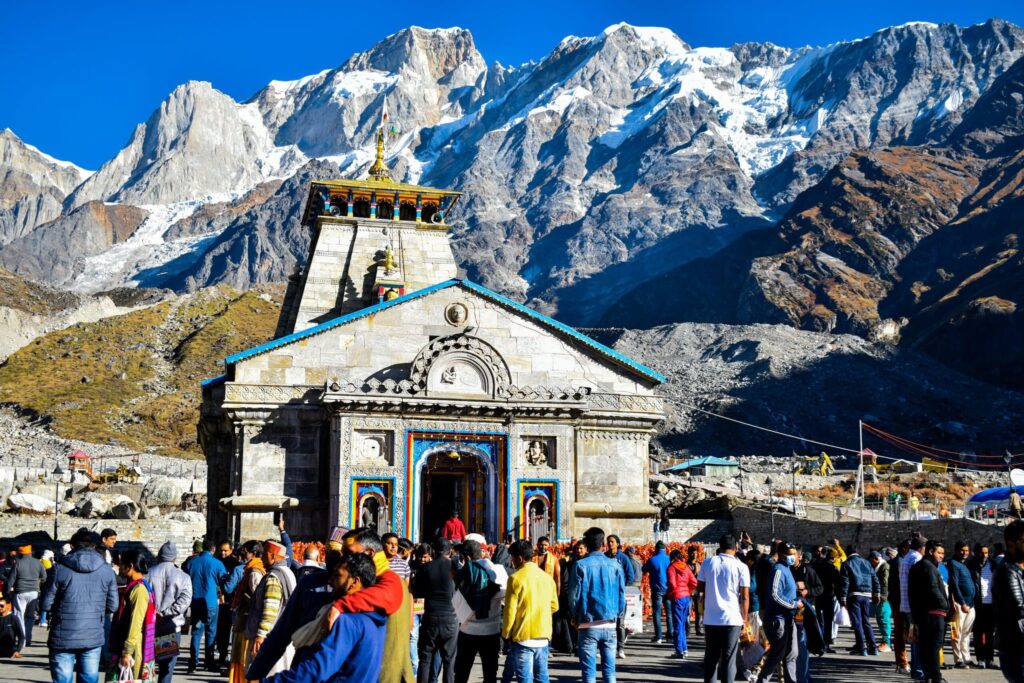
The Role of Technology in Modern Pilgrimage
In today’s digital age, technology plays a vital role in enhancing the Char Dham Yatra experience. From navigation apps to online booking systems, technology makes it easier for pilgrims to plan their journey. Some ways technology is transforming the pilgrimage include:
- Mobile Apps: Various apps provide real-time information on weather conditions, trekking routes, and accommodation options, helping travelers navigate the journey more efficiently.
- Social Media: Pilgrims often share their experiences on platforms like Instagram and Facebook, creating a sense of community and encouraging others to undertake the journey.
- Virtual Tours: For those unable to make the pilgrimage physically, virtual tours of the Char Dham sites are available, allowing spiritual seekers to experience the locations from the comfort of their homes.
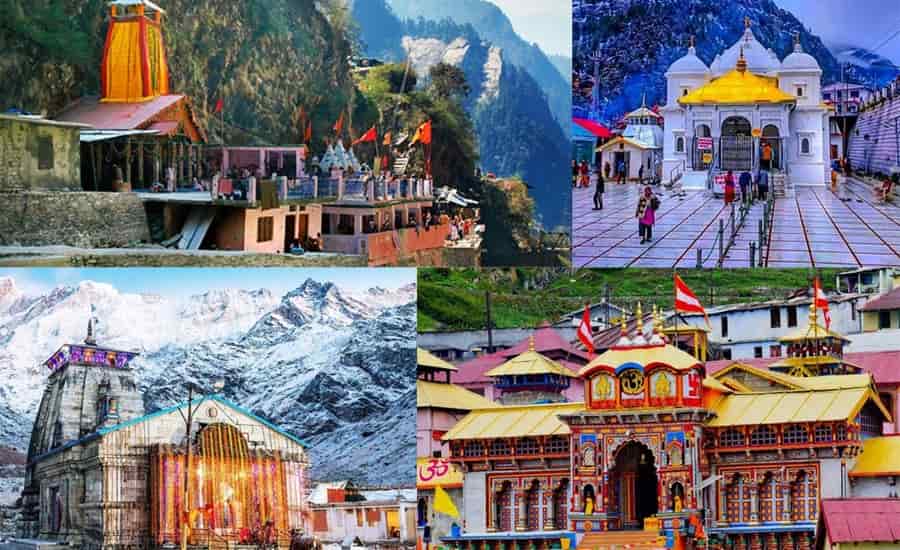
Conclusion
The Char Dham Yatra is a profound spiritual journey that offers much more than just a pilgrimage. It provides an opportunity to immerse oneself in nature, experience the rich cultural heritage of India, and connect with the divine. Each destination—Yamunotri, Gangotri, Kedarnath, and Badrinath—holds unique significance and breathtaking beauty, making this journey a must for anyone seeking spiritual fulfillment.
Final Thoughts
As you embark on this sacred journey, remember to take your time, soak in the beauty of the surroundings, and embrace the spiritual energy of the Himalayas. The Char Dham Yatra is not just about reaching the destinations; it’s about the experiences you gather along the way.
Keywords with Meanings
- Pilgrimage Circuit: A series of sacred sites that pilgrims visit in a specific order, often for spiritual reasons.
- Cultural Heritage: The traditions, customs, and artifacts that define a community’s history and identity.
- Scenic Views: Beautiful landscapes that are visually appealing, often attracting tourists and nature lovers.
- Himalayan Flora and Fauna: The diverse plant and animal life found in the Himalayan region, known for its unique adaptations to the environment.
- Eco-Tourism: Responsible travel to natural areas that conserves the environment and improves the well-being of local people.








Leave a Reply